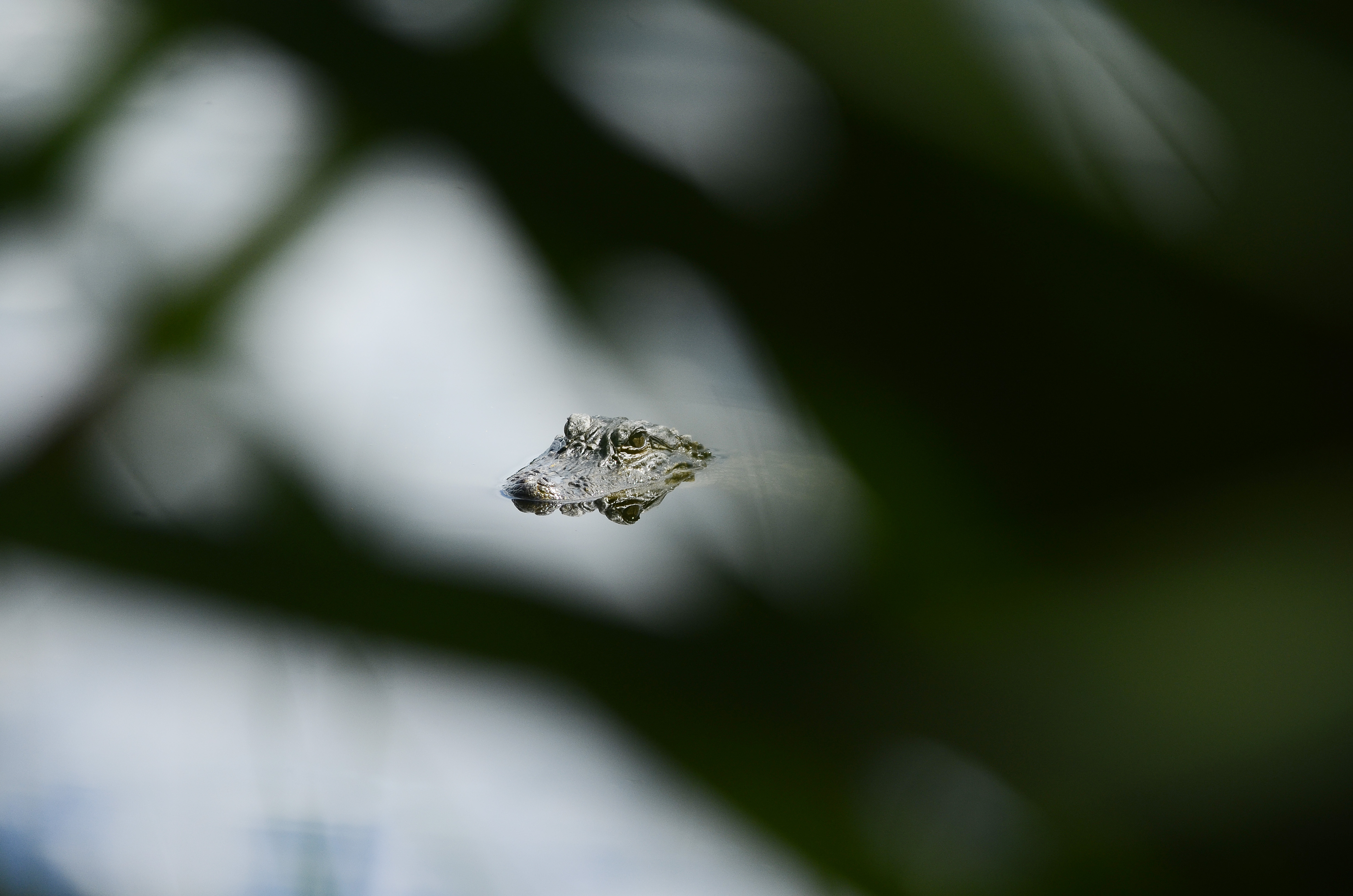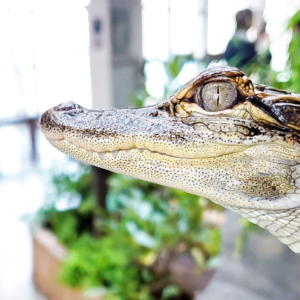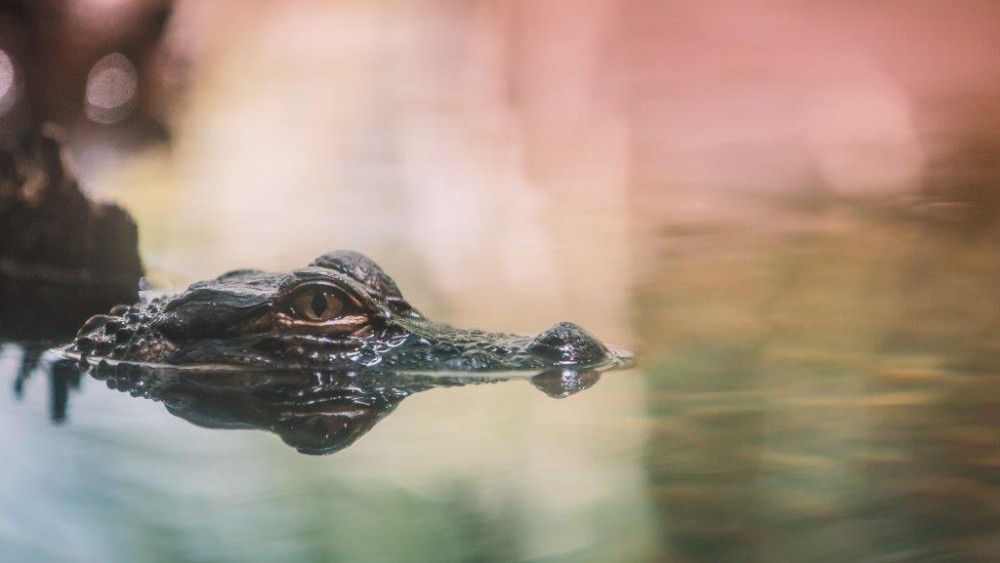With winter coming to a close, it’s a good time to talk about what animals have been doing to stay warm during the cold season! How do they do it without a warm mug of tea, fleece socks and Netflix? (We just described with scientific nomenclature the method of winter adaptation in humans.) While we all know hibernation is an adaptation technique among warm-blooded mammals, what about reptiles?

For example, let’s talk about the toothsome apex predator of the saltmarsh: the alligator! Alligators are coldblooded and rely on their environment for temperature regulation. While hibernation is a common adaptation technique among warm-blooded mammals, alligators do not hibernate, they brumate, the reptilian equivalent of mammal hibernation.
Hibernation and brumation are both periods of dormancy where physiological processes decelerate in response to cold temperatures. Though closely related, hibernation and brumation still have marked differences, most notably the level of inactivity. During hibernation, mammals will fall into a deep sleep, and they don’t eat or drink. During brumation, reptiles don’t fall into total slumber but still have periods of activity. Though they do not eat, they continue to drink to avoid dehydration.

When alligators brumate, their metabolic rate slows down and they become lethargic. On colder winter days, they create mud holes for warmth and shelter. On warmer days, alligators might emerge to bask in the sun. Alligators have prominent ridges along their backs called scutes, bone plates that act as a heat conductor. The scutes contain blood vessels and as the sun warms the surface of the skin, the blood running through the scutes is warmed and distributed throughout the rest of the body. When an alligator gets too warm while basking, it will open its mouth to dispel the heat.
Brumation and hibernation usually last for about 4–5 months, starting in November and ending in late February. For humans, our winter adaptation starts sometime around Thanksgiving and ends in January, during which time we generally never stop eating.
Do they have Netflix in mud holes?
Visit the Aquarium to learn more about alligators and other animals native to South Carolina.
Published March 8, 2016


